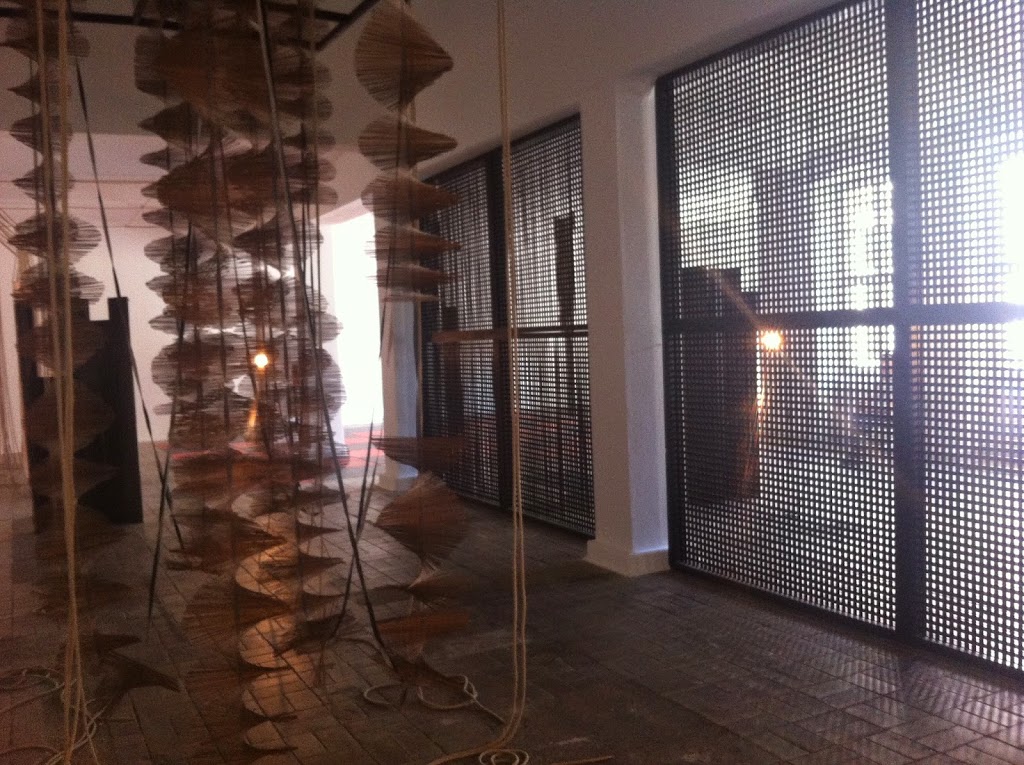The Beginning of Hope?: The Berlin Biennale 2014

During a week of retreat in Berlin, Dominic White (St Dominic’s Priory, Newcastle) stumbled upon the 8th Berlin Biennale…
Mining under sacred sites in South Africa; ‘exchanged’ ethnic minorities in Bangladesh; chemicals plants in China; racism exposed. The 8th Berlin Biennale for Contemporary Art continues its tradition of hard-hitting documentary art. While other concerns and themes are also explored, what’s clear is that artists are the philosophers of our time, and galleries are where we go to tackle big questions and issues. The organisers were clearly aware of this even in the location of the works: the biggest venue is Kunstwerke(“Art Works”), known as KW and located on the edge of hip Prenzlauer Berg. A former margarine factory, it was taken over by artists in 1998 and helped establish Berlin as an artistic capital. The other two sites are in leafy West Berlin: the pretty Haus am Waldsee, a tiny gallery on the Waldsee lake; and the Museen Dahlem, an ethnographic museum complex. In the latter, the Biennale works sit in the and around the galleries with the permanent exhibition and interact, sometimes uncomfortably, with the history of European exploration of other cultures: Gordon Bennett’s Notepad Drawings expose racism, David Chalmers Alesworth contributes a restoration of a Kashan carpet, while Alberto Baraya, pastiching 19th-century illustration techniques, satirises modern Europe in Expedition Berlin, a Herbarium of Artificial Plants.
Some works create tensions by being split over two sites, such as Anri Sala’s video UNRAVEL, in which a woman ‘plays’ the music of Ravel with her hands on a record (KW) and distorts it by fiddling with the needle (Haus am Waldsee, a perfect place for summer concerts). The overall impression, however, is of an isolated human being tending towards narcissism. And taken as a whole, the installations at KW both oppressed and depressed. The documentaries revealed injustice and existential crisis without really offering new vision, while Juliette Aranda’s Stealing one’s own corpse, a coolly cynical and sickening depiction of a potential new world in space, represents a hackneyed formula of contemporary art which might best be called Despair Porn. I couldn’t help contrasting this with Sarah Crisp’s recent installation Scene at The Holy Biscuit: she accompanies a no-holds-barred presentation of domestic abuse is with the music of Hildegard of Bingen, which holds it and raises it up in a tension of hope.
But the Berlin Biennale has one work which is an utter treasure: somewhat improbably called Crash Pad (click here for pictures), and situated in the front of KW, it lifted my soul. Andreas Angelidakis’ meditation on life after the Greek economic crash is first of all a work of justice, the precondition of hope: the rugs were specially commissioned from Greek artisans. They’re arranged around two rooms to create comfortable sitting areas, each with a bookshelf to hand, featuring classic counterculture philosophers such as Foucault and Marshall McLuhan. The idea is to stimulate thought and conversation between the visitors, and plaster Greek pillars suggest both fragility and the enduring value of ancient civilisations, in which dialogue was essential to philosophy. Angelidakis’ relational, resourcing art reminded me too of the friendly, community-focussed experiments in artistic working space currently taking place at Newcastle’s NewBridge Project. The beginning of hope?
Practical stuff: the Berlin Biennale is on till 3rd August. A single 16-euro ticket covers all three venues. And you can take photos – audience participation and free publicity for the artists…
The Berlin Biennale is the forum for contemporary art in one of the most attractive cities for art. Taking place every other year at changing locations throughout Berlin it is shaped by the different concepts of well-known curators appointed to enter into a dialogue with the city, its general public, the people interested in art as well as the artists of this world.